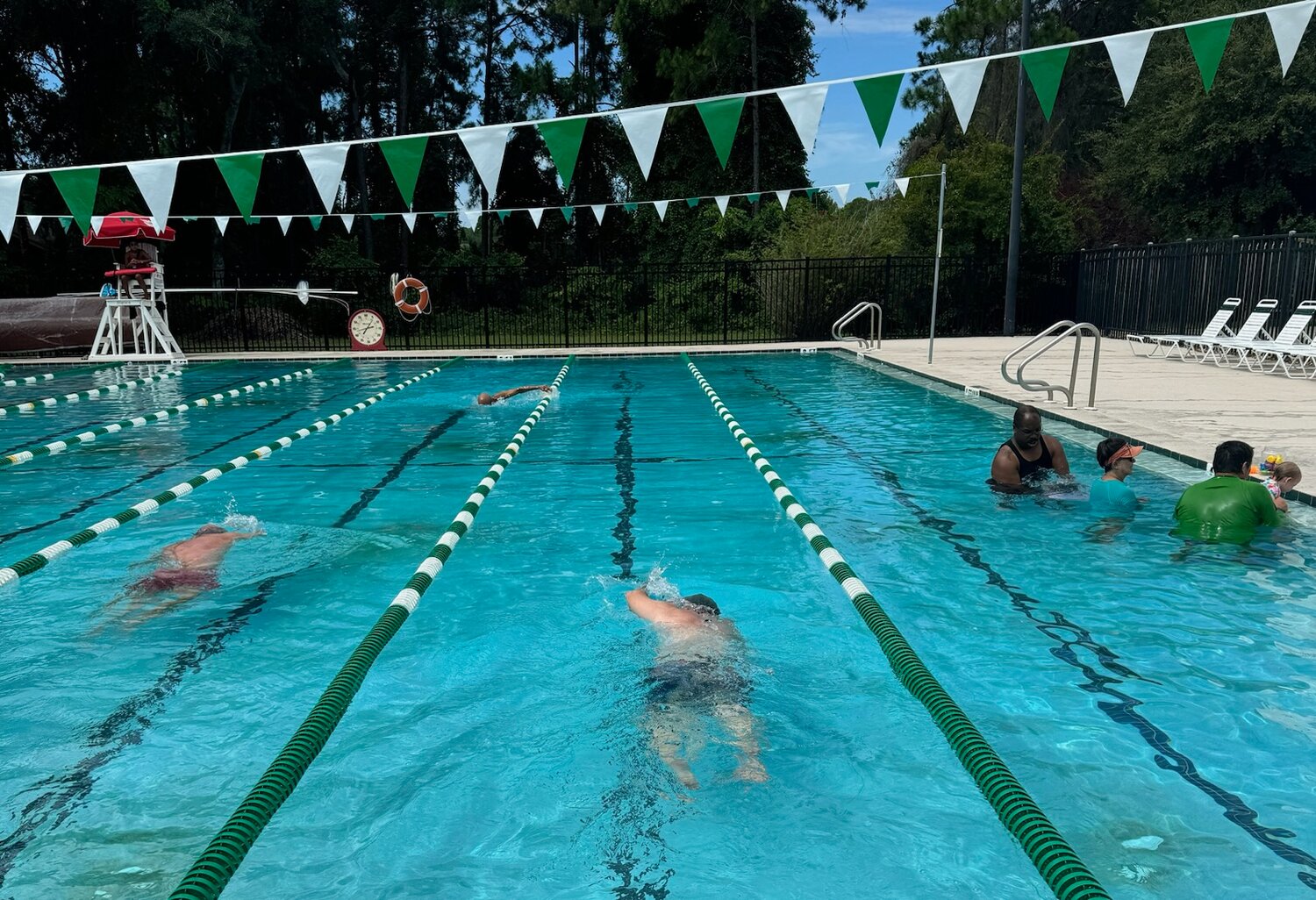Exercise Groups, Sports Teams, YMCA Officials, Deal with Extreme Heat
From weekend warriors to high school athletes, this summer’s long heat wave has triggered concerns about how to participate in outdoor activities and stay safe. Prolonged heat waves have gripped the United States this summer, part of the new normal of higher temperatures triggered by climate change, according to the federal government.
At the McArthur Family YMCA, employees have struggled to keep the outdoor swimming pool cool enough to allow lap swimmers to complete their workouts. The YMCA management team is funding repairs to the pool aerator and will eventually purchase a chiller to address the too-warm waters.
“Temperatures have been exceptionally hot and hotter earlier this year than before,” said Cezar Gonzalez, district executive director of the McArthur/Wildlight YMCA. “With the recent extreme heat, our cooling system hasn’t been cooling the pool as well as we’d like it to.”
The pool has four jets that spray water into the air, which is designed to cool the water before returning it to the pool. However, two of the jets are not functioning. Gonzalez said the first goal is to get all four jets working. The YMCA is also fundraising to install a pool chiller soon.
“Water goes up in the air, cools and drops. If the air has high humidity, the water goes up in the air and it doesn’t do anything,” Gonzelez said. “We’re trying to see if we can bring up four jets instead of two. We’re hoping that makes a difference.”
The pool temperature should be between 82 and 84 degrees but instead has been measured at around 86 to 88 degrees, he said.
“That has been a challenge,” Gonzalez said. “It’s been a hotter and more humid summer, but I think our problem is more related to the higher humidity.”
Gonzalez said hot weather also leads to higher usage at the YMCA, as people who normally exercise outdoors turn to indoor workouts. However, Roy Benson, coach of the Amelia Island Runners, a recreational group with about 150 members, says his group is persevering while taking precautions.
Working out at high heat and humidity is comparable to resistance training, he said.
“It’s the same as running up a hill,” Benson said. “You have to slow down the pace and keep the effort the same as it would be on a nice cool day when you would be going at a faster pace.”
Proper hydration is key, Benson said. Runners should avoid consuming too much water, which can wash out mineral electrolytes. He said he worries most about runners who are struggling but try to “tough it out.”
According to information from the U.S. Centers for Disease Control and Prevention, the body cools itself by sweating, but during extreme heat that self-protective mechanism may not be enough. Body temperature can rise faster than the body can cool itself. Heat stroke can damage the brain and other organs.
Symptoms of heat-related illness include fast pulse, headache, dizziness, nausea, confusion and fainting, according to the CDC. Factors that increase the risk of developing a heat-related illness are high humidity, obesity, fever, dehydration, prescription drug use, heart disease, mental illness, poor circulation, sunburn and alcohol use. Those most at risk for heat-related illness include children, older adults, outdoor workers and people with disabilities.
Benson provides his runners with specific information to avoid problems.
“If you are going out for longer than a couple of miles or 30 minutes or so, take a sports drink with you and drink six to eight swallows every 15 minutes,” he said. “Memorize the symptoms of heat exhaustion, especially the one about no longer sweating. If so, immediately cease active movement. Find some shade and call for help.”
The club, which works out on Wednesday evenings, cuts back on the duration of workouts on extreme-heat days, Benson said. “Then, for recovery, off we go for beer and pizza to celebrate surviving another hot-weather workout.”
Children and youths are considered among the groups most vulnerable to heat-related illness, according to the EPA. Last year, the EPA issued a report entitled “Climate Change and Children’s Health” to educate the public on the issue. The American College of Sports Medicine also issues guidelines to protect youths who play sports during hot weather.
Most major adult and youth athletic associations issue information on avoiding heat-related illnesses. Here are tips from the CDC:
- Stay hydrated with water. Avoid sugary beverages.
- Stay in an air-conditioned area.
- Wear lightweight, light-colored, loose-fitting clothes.
- Take a cool bath or shower to cool off.
- Limit outdoor activity to when it’s coolest, such as morning and evening hours.
- Rest in shady areas to allow your body time to recover.
- Avoid hot and heavy meals.
- Cut down on outside exercise during the heat.
- Wear sunscreen.
- If you’re not accustomed to working or exercising in the heat, start slowly and gradually pick up your pace.
- If your heart is pounding and you are gasping for air, stop all activity. Get into a cool area or shade and rest.
- Drink plenty of fluids, and don’t wait until you are thirsty to drink.
- Stay away from sugary beverages and very cold drinks.
- Understand how deadly a car can become during temperatures 80 degrees and higher. In only 20 minutes, the temperature inside the car can reach 109. It can reach 118 after 40 minutes.






